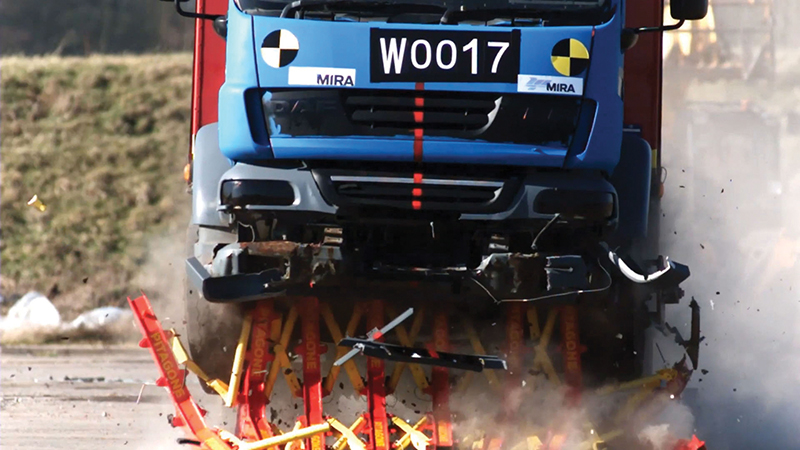 In an evolving security landscape where threats are always looming, understanding the pivotal role of Hostile Vehicle Mitigation (HVM) in counter terrorism (CT) is imperative. In our second article in a series on HVM we look at its role in any CT strategy
In an evolving security landscape where threats are always looming, understanding the pivotal role of Hostile Vehicle Mitigation (HVM) in counter terrorism (CT) is imperative. In our second article in a series on HVM we look at its role in any CT strategy
It is crucial to debunk a common misconception: HVM is not traffic management (TM) —it is a meticulously designed defence against terrorism. The strategy centres around implementing robust, independently tested, and rated equipment that acts as a formidable barrier against vehicle-led attacks, ensuring the preservation of lives and assets.
The Perimeter Security Suppliers Association (PSSA) strongly believes that the Hostile Vehicle Mitigation Installers Scheme (HVMIS) – a critical initiative by the PSSA – should be reinforced through formal legislation. Currently operating as an essential, yet non-statutory scheme, HVMIS plays a crucial role in our strategic approach to perimeter security. The PSSA is advocating for the elevation of this scheme to a legislatively mandated initiative. The architecture of this proposed legislation aims to ensure the selection of the precise skills and knowledge necessary for effective HVM installation and operation.
Choosing the right person or company for HVM is like picking the right doctor for a specific medical problem. You need someone with the right skills and knowledge for the job. It’s not a one-size-fits-all situation; the person or company you choose must have specific expertise in HVM.
This specificity and specialisation are essential. Imagine entrusting an electrician with plumbing repairs or expecting a tree surgeon to perform a medical operation. Such a mismatch of expertise could yield disastrous outcomes. In the field of HVM, the stakes are immensely high. Entrusting non-specialists, with the supply and installation of HVM equipment, risks the integrity of the system, thus compromising the safety it vows to uphold.
Paul Jeffrey, PSSA Chairman commented “The PSSA strongly advocates for the implementation of more robust and mandatory legislation surrounding the Hostile Vehicle Mitigation Installers Scheme (HVMIS). We believe that the guidelines and standards proposed within the HVMIS should not just be recommendations, but firmly enforced by law, obligating all installers to uphold these stringent standards rigorously.
By instigating this crucial legislative action, we aim to ensure that the deployment of Hostile Vehicle Mitigation systems is executed with the utmost precision and effectiveness, guaranteeing enhanced compliance and the reinforcement of our perimeter security solutions against any potential vehicle-based threats or attacks.”
Diligence and due consideration are the bedrock of effective HVM. The end-users and installers must foster a keen understanding of the CT threat landscape, ensuring that the HVM strategies echo the identified vulnerabilities and risks. The domain of HVM is varied, extending beyond the mere installation of barriers for road closures. It needs a great understanding of strategic placement, ensuring maximum delay in the face of threats, allowing time to put necessary protective measures in place.
Paul Jeffrey added, “Due diligence of the end user is crucial in perimeter security. Always ensure that your HVM provider/installer comprehensively understands your CT threat, vulnerability, and risk
Accreditation stands as a cornerstone in optimising the efficiency of HVM installations. Ensuring that the HVM equipment is installed as per the tested specifications is vital. Incorrect installations cast a shadow not only over the installer and the manufacturer but over the integrity of the entire industry. It fuels misconceptions regarding the effectiveness of HVM measures, thereby undermining public confidence in the protective mechanisms aimed at safeguarding crowded spaces.”
The PSSA’s HVMIS emerges as a beacon of comprehensive approach towards hostile vehicle security. The scheme, embroidered with stringent guidelines and processes, focuses on aligning installations with physical constraints and the budgetary considerations of clients without a compromise on safety and functionality. The emphasis on mandatory maintenance, operational training, and third-party verifications such as those through CTSA’s, NPSA, NaCTSO, and CT SecCos underscores the commitment to maintaining a consistent standard of quality and compliance across the board.
The development of HVMIS is the result of thorough assessment and collaboration among various groups, including government agencies and the PSSA Council. This joint effort shows a strong dedication to improving security strategies with a shared vision.
In conclusion, the emphasis should be on recognising HVM as a specialised profession that plays a pivotal role in counterterrorism strategies. It is not just an auxiliary component of traffic management but a crucial line of defence against hostile threats. A collective endeavour towards tighter legislation, diligence, and enhanced professionalisation within the industry is imperative to protect our defences, ensuring that our public spaces remain places of safety in the face of evolving threats.

